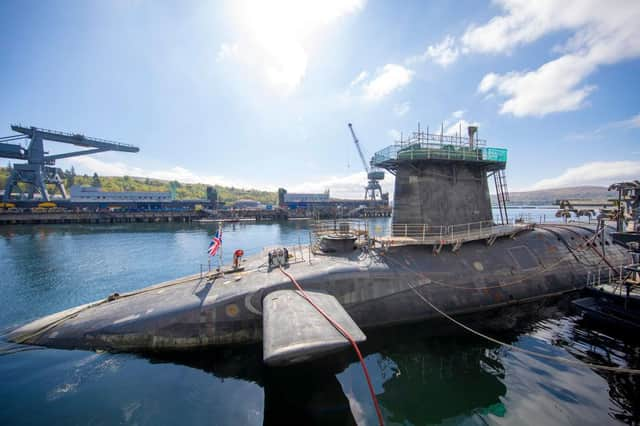Defence review 2021: how much the UK spends on nuclear weapons - and why government is lifting cap on Trident


The UK is to reverse plans to reduce its stockpile of nuclear weapons.
The announcement came following the release of the defence review, with the cap on nuclear warheads to increase to 260, despite plans to drop to 180.
Advertisement
Hide AdAdvertisement
Hide AdSpeaking to the House of Commons, Boris Johnson also laid out plans to modernise the armed forces and take a more “robust” stance over the “deteriorating” global security environment.
The Integrated Review (IR) sets out plans to update the country’s “deterrence posture” in the face of growing threats from hostile states and non-state actors.
It says the UK must improve its ability to “disrupt, defend against and deter” the threats it faces in both the physical world and in cyberspace.
What does the defence review reveal?
It says the UK must improve its ability to “disrupt, defend against and deter” the threats it faces in both the physical world and in cyberspace.
Advertisement
Hide AdAdvertisement
Hide AdIt will mean deploying more of the armed forces overseas more often and for longer periods, in an effort to deter state threats “below the threshold of war” through a strategy of “persistent engagement”.
“We will demonstrate that we are able and willing to respond when our citizens and interests are targeted, including with force if necessary,” the IR says.
At the same time, the Government is lifting its self-imposed cap on its stockpile of Trident nuclear warheads from 180 to 260.
The move is said to be in recognition of the “evolving security environment”, including the developing range of “technological and doctrinal threats”.
Advertisement
Hide AdAdvertisement
Hide AdA defence command paper to be published next week will set out the detailed plans to modernise the armed forces, with a new generation of warships and fighter jets.
It will also include a major overhaul of the Army, which is expected to be cut by around 10,000 troops, with the force Challenger 2 main battle tanks reduced by a third and the Warrior infantry fighting vehicle axed altogether.
The IR says it will prioritise the development of new technologies, with a “digital backbone” to enable UK forces to operate alongside allies across a range of battlespaces.
As well as maintaining an offensive cyber capability, there will be a new “space command” and measures to improve CBRN (chemical, biological, radiological, nuclear) resilience.
Who is the UK’s biggest threat according to the review?
Advertisement
Hide AdAdvertisement
Hide AdOverall, the review says the primary focus of Britain’s security effort will remain the Euro-Atlantic region, where Russia poses the “most acute threat”.
However, in the face of China’s growing power and assertiveness – described as “the most significant geopolitical factor of the 2020s” – there will be a new “tilt” towards the Indo-Pacific.
It will be marked by the deployment to the region later this year of the HMS Queen Elizabeth carrier strike group on its maiden operational deployment.
“The significant impact of China’s military modernisation and growing international assertiveness within the Indo-Pacific region and beyond will pose an increasing risk to UK interests,” the IR says.
Advertisement
Hide AdAdvertisement
Hide Ad“Open, trading economies like the UK will need to engage with China and remain open to Chinese trade and investment, but they must also protect themselves against practices that have an adverse effect on prosperity and security.”
The review highlights the security threat from the “opportunism” of countries like Iran and North Korea as well as from Russia.
It says such state threats include espionage, political interference, sabotage, assassination and poisonings, electoral interference, disinformation, propaganda, cyber operations and intellectual property theft.
How much does the UK currently spend on defence and Trident?
Advertisement
Hide AdAdvertisement
Hide AdIn November 2020, Boris Johnson set out a £16.5 billion increase in defence spending over four years.
The prime minister told parliament that would represent spending of £190 billion on defence by 2025.
In February 2020 the government committed to a multibillion-pound replacement of Trident with nuclear warheads based on US technology.
The cost of replacing Trident is estimated at £31 billion.